And before I leave the subject of water in Venice……
If one is compelled to cross the Piazza San Marco — and from Easter till the first hard frost one crosses only under compulsion — one doesn’t expect to see anything beyond the daily disarray. On a recent afternoon Lino and I (under compulsion) were crossing, and because the crowds were swarming momentarily in another part of the piazza, we discovered something new. Old, of course, but new to us.
Lines on the stones. Significant lines bearing a message to somebody somewhere in the future, if anybody were to notice. Or care. That would be me.
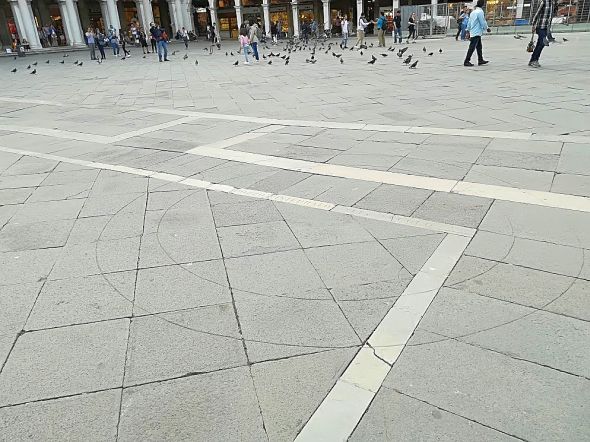
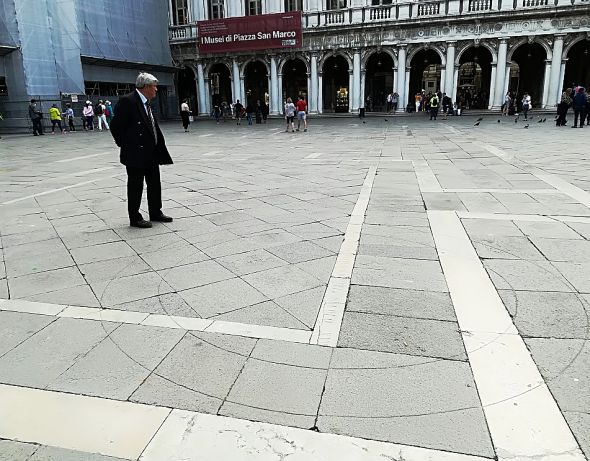
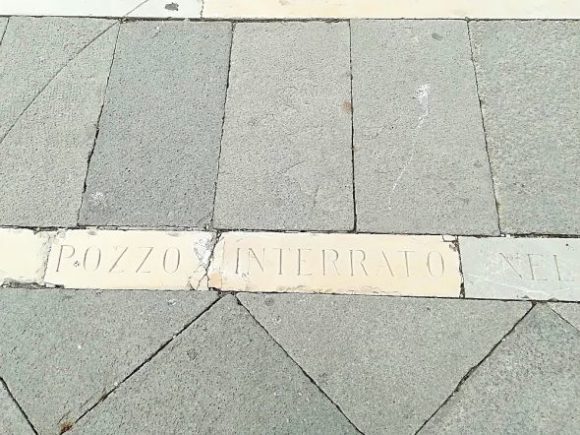
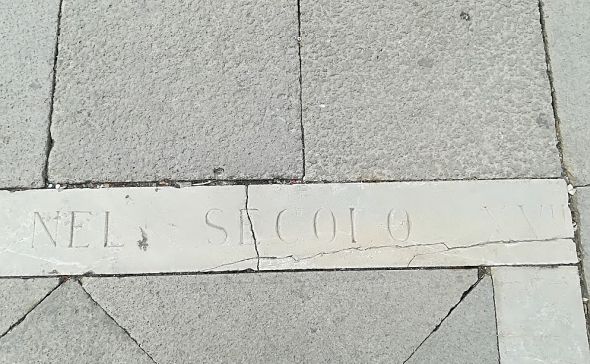
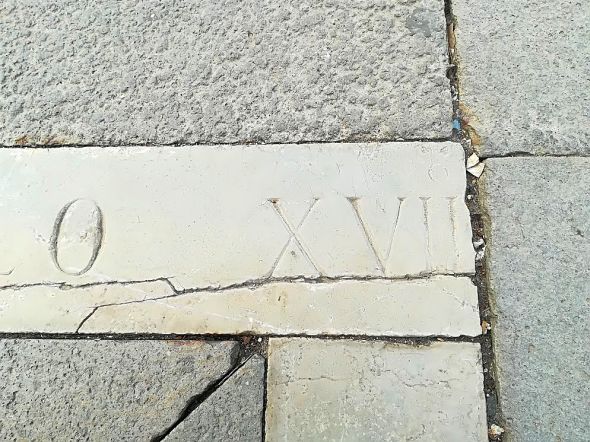
I haven’t succeeded in finding much more information than that, so kudos to Walter Fano on his blog L’altra Venezia for supplying at least the following bits (translated by me): “In the ancient Piazza San Marco there were wellheads, but how many isn’t very clear. In 1283 one was located at the entrance to the Mercerie (N.B., under the clock tower), while in 1494 the historian Marin Sanudo speaks of two wellheads. In successive epochs, anyway, all the histories speak of only one well located at the bottom of the piazza, near the church of San Geminiano (a church which Napoleon wanted demolished at the beginning of the 1800’s, who caused the so-called “Ala Napoleonica” (Napoleonic Wing) to be built in its place which today closes the piazza at the side opposite the basilica).”
Paintings by Giovanni Canaletto, Francesco Guardi, Antonio Vicentini, all working in the late 1600’s/early 1700’s do not reveal anything resembling a wellhead in the Piazza San Marco, and considering their mania for accuracy, I’m going to accept that it was already gone when they began sketching. I had hopes of glimpsing a well in Gentile Bellini’s “Procession in Piazza San Marco” (1496), but he cleverly composed the scene to as to obscure the area in question. I give up.
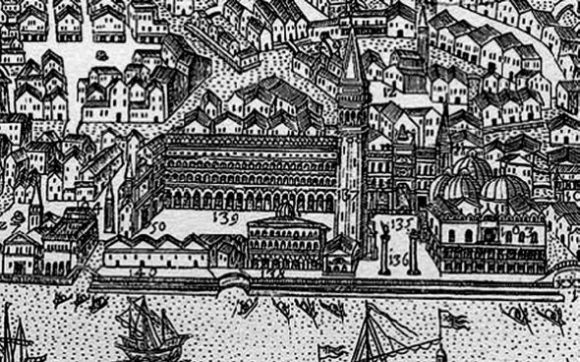
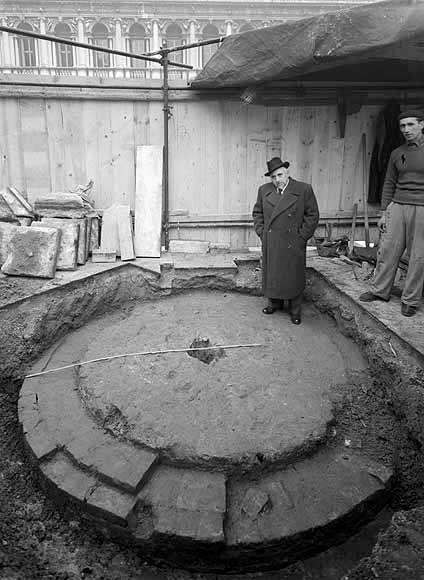

2 Comments
Erla — Another wonderful bit of detective work. Venice, past and present, captured with keen perfection on camera and journaled with methodical curiosity, razor wit, refreshing cynicism, and ultra-articulate presentation. God, could we but have your critical eye and analysis on the rest of the world. –Dorothy in Duluth
Bellissimo, grazie. Who is the person in the picture? Is that known? What was the year? Ciao, un abbraccio a Lino!